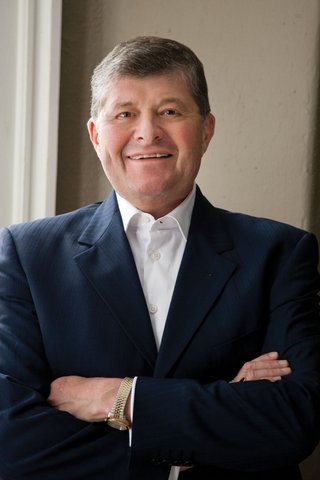Case Study: Succession Planning in the Palliative Care Unit

Succession Planning in the Palliative Care Unit
John Geddes
Succession planning is often delayed or avoided due a number of reasons. And while the details may differ client to client, failure in this area is a phenomenon common to many family enterprises. The following story details a difficult and complicated situation for one of my clients.
Bill, aged 68, had an 80% majority ownership in a third-generation glass cutting and installation business in the Mid-West US, which I’ll call “OM Glaziers”–“OM” for short. The company cut and installed glass shower stalls for condo buildings and some single-family residences, and also designed and installed glass store fronts, decorative glass walls and shelving units for retail applications. Bill’s brother Vance owned the balance of the company and drew a substantial salary, but never worked in the business, which employed 95 staffers. Bill had been separated from his wife Nancy for over 25 years—with whom he had three children. He also had a live-in common law spouse of 20 years.
As he neared retirement, Bill wanted one of his children to assume control of the business in order to maintain its legacy for generations to come. However, all three children were hesitant to work with Bill due to the way he handled his separation from their mother, coupled with the animosity between the children and Bill’s common-law wife.
After two years of failing to convince any of his children to join the company, Bill decided to sell the business. A valuation was completed, in which we learned that despite the company’s overall profitability since inception, it had taken hits over the last two years as Bill began to lose interest in the business. When the valuation number was presented to Bill, OM was worth significantly less than the amount Bill would need to retire comfortably—a significant worry, as he had planned on using the proceeds of the business to finance his pension.
At one point, several years back, one of OM’s largest customers, a retail design and installation company—representing more than one third of OM’s business, encouraged Bill to set up a facility closer to the client’s plant in an adjacent state, under the agreement that the client would double its order flow if OM were nearer. This seemed like a viable opportunity, so we began helping Bill lease a building, purchase equipment and relocate some of his key people to this new satellite location. Unfortunately, just as this initiative began gathering momentum, Bill was diagnosed with terminal cancer.
Although his team of professional advisors encouraged him to move forward with his estate planning, Bill did not wish to take any next steps, such as creating a shareholder’s agreement with his brother, updating his will, or finalizing the divorce with his long-separated wife.
When Bill’s cancer fortunately went into remission, he went back to work—quickly resuming his plans to open the second plant. Unfortunately, the remission was short-lived, prompting me to step up my efforts in working alongside his accountant, family lawyer, and corporate lawyer to encourage him to complete his estate planning tasks. Bill was not receptive to these suggestions, but he did agree to let us begin negotiating the sale of OM.
Many hours of legal and accounting time were spent making and revising offers, in an attempt to bring the sale of his business to a conclusion, including hiring an interim general manager for the company. At the same time, Bill, during a tough round of cancer treatments, focused on getting back to work. My work continued as I encouraged him to finalize his personal affairs.
Some months later, Bill was admitted to Palliative Care. Although his physical condition worsened, Bill was declared of sound mind by doctors, so his lawyer, his accountant and I set out to work on drafting Bill’s shareholder agreement with his brother, his divorce settlement with his wife, his will and his power of attorney papers. Thirty-six hours before he died, Bill signed the last document.
After Bill’s death, our work continued. We had been charged with completing a strategy for the sale of his business. This entailed multiple meetings with his children, in order to explain the processes and timelines required before all financial matters could be settled.
Recently, the business sold for a very reduced sale price. The proceeds were divided amongst Bill’s heirs, and 40 positions were eliminated by the new owners.
Although this situation had a somewhat better ending than many of us thought it would, this is certainly not the type of legacy Bill wanted. And while a succession plan was ultimately achieved, there are obviously less stressful, more efficient ways to accomplish this.
Some final takeaway points from this cautionary tale, are as follows:
- We must investigate the deep-rooted issues faced by our family business clients—even if it’s time-consuming and requires lots of dialogue. Only after Bill was diagnosed with cancer, did I learn how his father, from his death bed, asked him never to sell the company. Consequently, even though Bill had wanted to sell the company for the last 10 years, he was racked with guilt over the prospect of doing so. This knowledge helped me understand Bill in a more profound way, so that I could help him make decisions.
- In engagements such as this one, a multi-disciplinary team approach is successful as long as there’s a comprehensive plan in place, so that roles are well defined and understood by all the players. This advisory group, comprising the corporate lawyer, the tax lawyer, the accountant and myself, maintained weekly meetings and regularly-scheduled telephone calls—including Bill and his family members in the discussions when needed. This team effort and shared vision let us help Bill and his family make decisions and complete the paperwork needed.
- We recruited a seasoned manufacturing executive to manage the business until it was sold. The advisory team and family realized that without Bill, the business was not being adequately managed. Furthermore, we recognized that the customers, employees, suppliers and other stakeholders felt vulnerable without Bill in charge. The interim General Manager we hired was well-known in the industry and stayed in constant communication with our advisory group and family. This person, who was instrumental in selling the company as well, removed a significant burden from the family during its time of need.
- While Bill told me how the three siblings had never been close with each, he also stressed that there had never been much conflict either. But when it became clear that Bill was terminally ill, we began to see a growing hostility amongst the siblings, stemming from disagreements about what should happen to the business. Two wanted to sell the business immediately, so they could have the money coming to them as soon as possible while the other wanted to keep the business. For me, it was a rude awakening to witness the impact of potentially accessing money before their father had died. As their advisor, I encouraged the siblings to demonstrate respect for each other and for their father and to live in the present.
- Finally: no matter what is happening in the client’s life, as family business advisors, we must realize that we can only push so far in our efforts to develop and implement succession plans. Sometimes this means accepting the fact that the outcome we achieve isn’t always as complete as we know it ought to be.
About the Contributor :
With his origins in banking, John Geddes has been a member of FFI since 2006 and received his CFBA in 2008. He is a Certified Management Consultant and holds an Honors Business Degree.
Interested in submitting a case for The Practitioner? The Practitioner editorial board member, Guillermo Salazar, explains what the editorial board is looking for in case studies:
“Every client engagement is a potential case study. A case study is a personal story, a living example of how your services influence costs, productivity, efficiency or the relationship of their family members. Your customers are a unique source of knowledge to you and your colleagues.
If you wish to write a case study about one of your client experiences, choose a significant issue in relation to the existing literature. A case study often follows the same basic format: Identifies the client’s particular challenge, describes the solution provided by your services and illustrates results gained by using your help. The subject does not have to be well-known or influential. It could be almost any business, from a Fortune 500 to the corner store. Build on your knowledge, experience, resources and methods. Be realistic. Readers appreciate perspectives which assist them in their day-to-day work. And avoid promoting a particular firm, product or individual.”
Click here for the FFI Practitioner’s protocol for submitting a case study.
Yours in Practice,
The Practitioner





